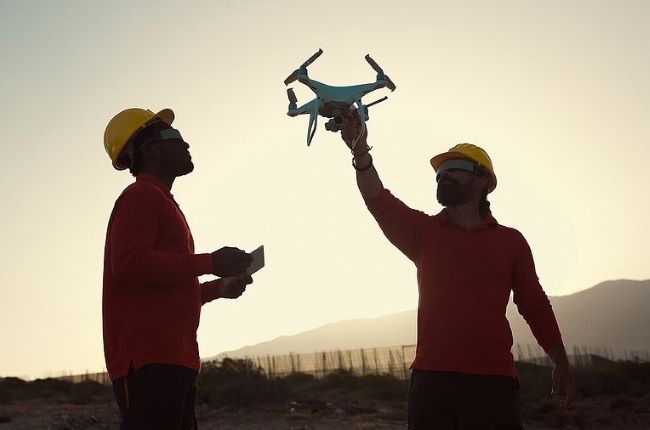New Tech That Can Improve Construction Safety

While inspecting a skyscraper, a construction worker suffers a fatal fall. On a hot summer day, a worker suffers heat stroke and has to be rushed to the hospital. After years of work, a construction worker develops back pain and is forced into an early retirement. Construction has always meant dangerous work, but this doesn’t mean accidents like these are unavoidable: new technology has the potential to improve construction safety. At a time when costs are high and skilled workers in short supply, new tech could be a game changer.
Drones Go Where Humans Can’t
To make safe decisions, you need to be informed. Drones can collect information about hard-to-reach places. This information can help workers avoid hazards and prepare appropriately before they access particular areas.
The National Institute for Occupational Safety & Health (NIOSH) says drones can help construction management monitor and inspect large construction sites. Drones may be especially useful when inspecting tall buildings and bridges, where human workers would be at risk of falls if they managed the inspections in person.
NIOSH says falls are the leading cause of death in the construction industry, accounting for 36.4% of all fatalities. Although safety equipment can help workers stay safe at high elevations, it’s even better if workers can stay at ground level. With drones, contractors can eliminate some high-elevation work.
Drones may also help keep construction sites safe from crime. Thieves often target construction sites due to the expensive equipment and valuable metals. Drones provide another way to monitor the site to catch thieves and discourage crime.
Monitoring Devices Keep Workers Safe
In commercial trucking, telematic devices can monitor vehicles to ensure they’re operating correctly and monitor drivers to ensure they’re driving safely. Wearable devices can provide similar benefits in the construction industry. For example, smartwatches can detect falls, notifying other crewmembers to help without delay. Wearable devices featured at the 2021 CONEXPO-CON/AGG trade show include smart boots, smart helmets, and augmented reality eyewear.
According to Engineering News-Record, wearable safety monitoring devices can collect safety data and issue warnings. Although some workers may have privacy concerns, the potential safety benefits make these devices extremely attractive. Both large and small construction companies are starting to embrace this technology.
These devices may be especially helpful for contractors dealing with dangerously hot weather. Construction Dive says one health monitoring company has created an armband connected to a mobile app to monitor workers’ body temperatures and help them avoid heat-related illnesses.
Heat stroke is no laughing matter. OSHA says dozens of workers die each year working in hot or humid conditions and thousands more become ill. Technology like this could help workers avoid heat stroke and save lives.
Exoskeletons Help Workers Move Safely
Construction exoskeletons are devices workers can wear to support posture or movement. NIOSH says passive exoskeletons support posture or movement using springs, counterbalance forces, or other unpowered mechanisms, whereas active exoskeletons use powered force or torque-generating elements, such as electric motors, pneumatics, or hydraulics to support posture or movement.
Construction workers are vulnerable to work-related musculoskeletal disorders – soft-tissue injuries caused by overexertion and repetitive motions. NIOSH says older workers are especially susceptible to musculoskeletal disorders and may require hospitalization. These disorders have also been identified as a contributor to the opioid epidemic.
Exoskeletons may help prevent musculoskeletal disorders by providing back support and improving posture. This could prevent injuries and workers’ compensation claims. It could also help keep older workers active in the labor force for longer. The U.S. Chamber of Commerce found that 62% of contractors are having a high level of difficulty finding skilled workers and 45% of contractors have had to turn down work due to skilled labor shortages. Many construction companies are eager to use tech that could boost retention – and exoskeletons might do exactly that.
Building Your Construction Safety Strategy
New tech promises to improve construction safety, which could mean fewer injuries and deaths. It could also help construction companies boost worker retention, improve efficiency, and cut costs. This tech may be game changing, but it’s still just one aspect of your overall risk management strategy. BNC provides custom-built insurance packages for the construction industry. Learn more.







